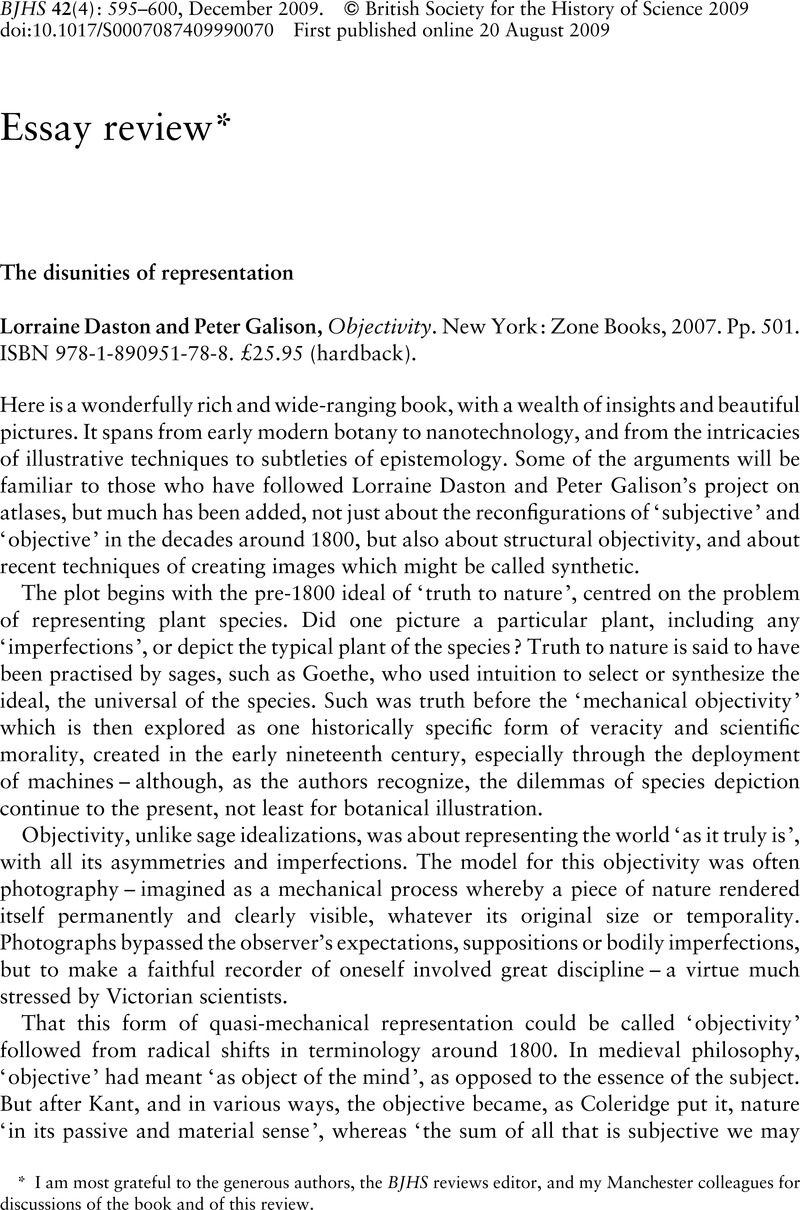Published online by Cambridge University Press: 20 August 2009

1 J. Tucker, Nature Exposed: Photography as Eyewitness in Victorian Science, Baltimore, 2005.
2 J. Snyder, ‘Visualisation and visibility’, in Picturing Science, Producing Art (ed. C. A. Jones and P. Galison), London, 1998, 379–97.
3 For more on this approach to the period, and more generally on ‘levels’ of knowledge, see J. V. Pickstone, Ways of Knowing: A New History of Science, Technology and Medicine (Manchester, 2000 and Chicago, 2001); and idem, ‘Working knowledges before and after c. 1800: practices and disciplines in the history of science, technology and medicine’, Isis (2007), 27, 489–516. I would note here that this approach can also be linked to the Kantian shift explored by Daston and Galison, and to their discussions of structural objectivity and synthetic representations.
4 The links between mathematical sciences and microscopy are beautifully developed in J. Schickore, The Microscope and the Eye: A History of Reflections, 1740–1870, Chicago, 2007. One may also note that checking analytical accounts against accurate measures became a recognized method of discovering ‘residuals’ in both chemistry and physics. ‘Virtue’ could bring novel rewards.